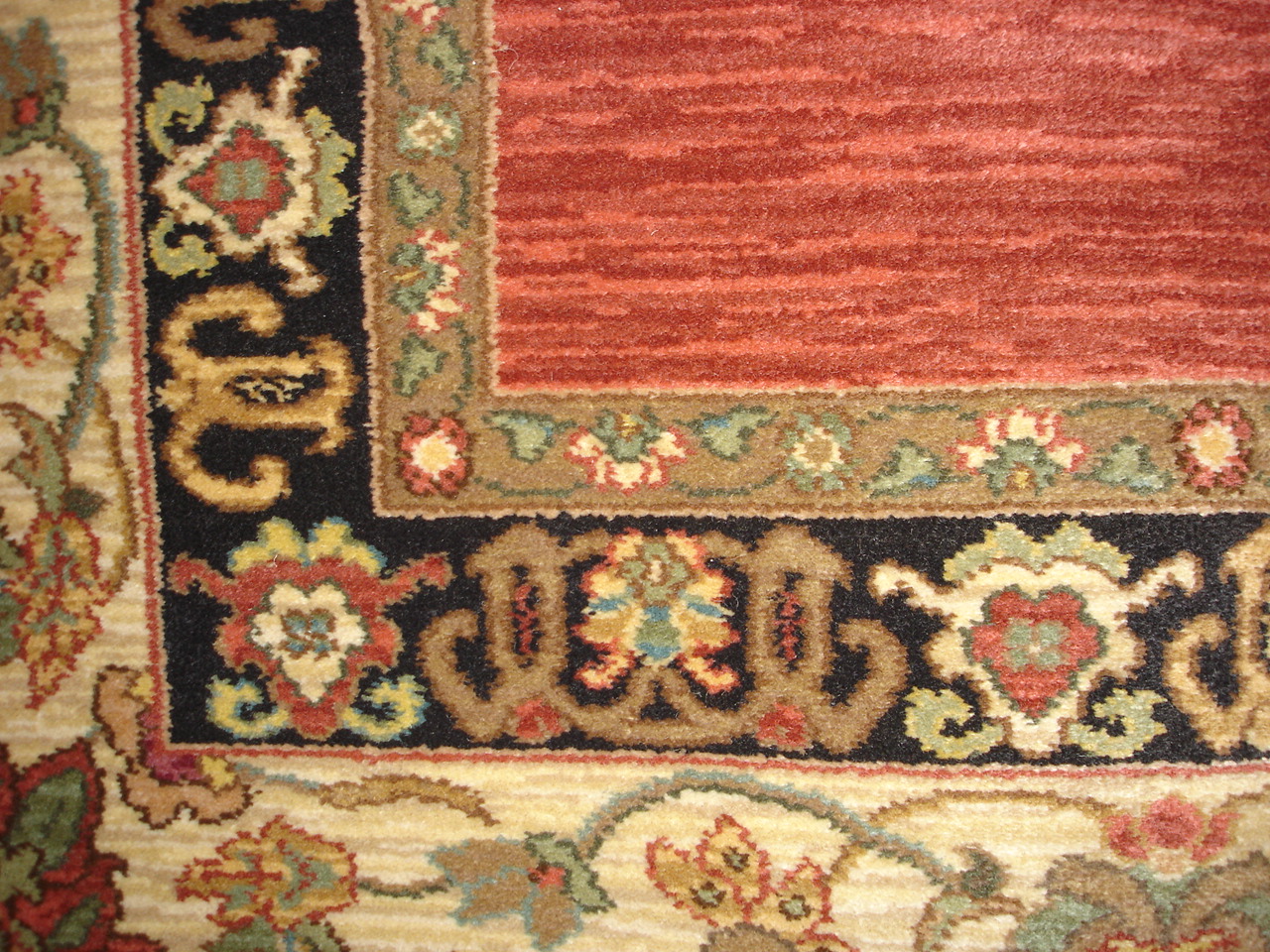When buying a rug or searching for one online, you might have come across the term “abrash”. Abrash refers to the express the colour variations and different shades in authentic, antique oriental rugs. This is especially true in the case of rugs woven in tribal or nomadic settings. When buying and authentic antique rug, you might notice that one of their characteristics is their imperfections. This is what makes these rugs so valuable, artistic and unique, which sets them apart from industrially manufactured and reproduction rugs.

How Does Abrash Occur?
Abrash enhances the beauty of your handmade, oriental rug and is actually highly desirable. It is only visible in wool that uses natural dyes and is handspun. Handspun wool possess fibres that naturally vary in diameter, which results in different fibres absorbing dyes to different extents. As a result, the overall colour is slightly different. This difference becomes more visible when the process uses natural dyes. Natural dye lots vary and are never similar to each other.
Real abrash is difficult to find in the modern rug market as many manufacturers use different artificial methods to produce modern rugs. Secondly, there is minimal use of natural dyes and more emphasis on artificial dyes for colouring the wool used in rugs. Further, industrial wool spinning means the fibres are generally uniform in size and shape. This is why rug lovers place great value in real, oriental rugs featuring abrash, as they have been traditionally handmade. It is also why antique rugs go for higher prices than modern rugs.
Finally, there are certain factors that cause abrash and these vary greatly based on religion, culture, lifestyle and sun exposure.
Inconsistency in Dye Lots and Wool Spinning
Nomadic dyes are made from vegetable. Rug makers extract vegetable dyes from leaves, seeds and the roots of different plants. Soil conditions in different areas and picking seasons affect the quality of the resulting dye hues. Ground minerals also vary in concentration by year, causing pigment variations.
Hand woven rugs take months to complete, and many rug weavers belong to small tribal regions with limited financial resources. As a result, artisans mix dyes in lots and spin the wool in small amounts through the process. Further, the quality and source of the wool is often inconsistent, and it often absorbs the dyes in different ways, making variable pigments in handmade rugs. This results in varied intensity and colour shading, which also reflects the migration patterns of the rug weavers and artisans.

Is Abrash a Flaw?
Experts do not consider abrash a flaw, though some collectors, interior designers and homeowners prefer uniform rugs. How appropriate abrash is for your rug and home depends on your preferences and taste. It is important to remember that all handmade oriental and antique rugs are imperfect, which adds to their charm. The aesthetics of the shade irregularities are part of why they appeal to rug lovers. Machine rugs can add artificial abrash to a rug, however they are cheaper, are reproduced (so your rug isn’t truly unique) and differ in quality.
Abrash Can Appear During Cleaning
Sometimes abrash colour variations can be hidden by surface soiling. When a professional cleans a rug, they remove surface soil groom the pile. This is when the true, authentic pile colouration is revealed, along with abrash variations. It is important to remember that these were here at the time of manufacture.
There is also the possibility that slight variation in pile direction can also be seen after cleaning. Pile variation and abrash can both show up after a proper cleaning. These are not defects but characteristics of the many variables and dye lot difference that go into authentic, hand made rugs.

Abrash vs Sun Fading
Abrash colouration can sometimes be confused with colour fading from the sun. But there are ways to determine whether a rug has naturally occurring abrash or whether it has been damaged by sun fading.
First, look closely at the back of the rug in the same are as on the opposite side of the rug, where you think the abrash or fading has occurred. If there are no signs of colour variation in the backing, then you likely have sun fading damage, not natural abrash. This is due to the fact that sun fading wouldn’t go through the back of the rug.
However, it is important to note that some oriental rugs or even some areas in an oriental rug might not have had dye penetrate all the way through to the rug foundation.
Our second step is to look into the pile of the rug, by spreading it apart. If the colour is stronger toward the middle or lower area of the wool, this means the colour variation is likely due to sun fading. If the colour is uniform through the pile, it is likely the rug has abrash.
Further, some rug retailers will chemically treat or tea-wash a rug to give it a softer look, similar to an antique rug. This tea-washing can fade over time or partially removed during cleaning.
Looking for a caring professional to clean your precious antique rug? Woods Rug Laundry specialises in cleaning antique and oriental rugs. Contact us today for our convenient pick up and drop off service!
